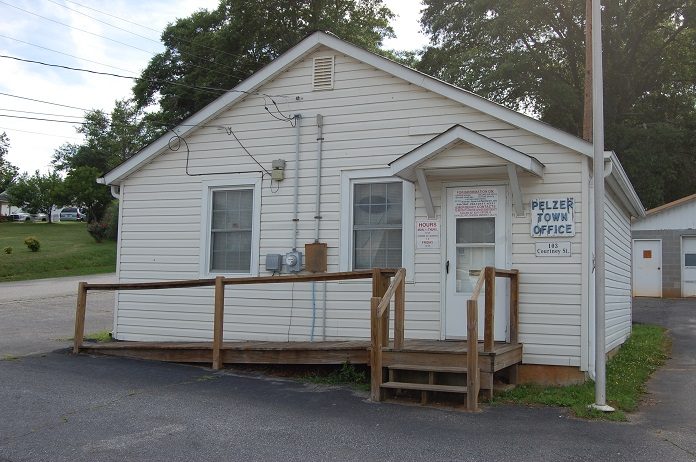During a special called meeting Tuesday, Pelzer Town Council approved second reading on a new ordinance adopting building setbacks and lot area requirements for buildings and structures in the town.
The Pelzer Planning Commission held a public hearing on April 19 and voted unanimously to approve the requirements and recommended Council adopt the new ordinance.
The new requirements are adopted per the International Residential Code and International Building Codes and other Anderson County codes relating to construction setbacks for buildings and structures for fire life safety.
The ordinance states that building setbacks and lot area requirements are needed to ensure the provision of light and open space between adjacent properties are adequately located, and setbacks are required to accommodate future road widenings at the lowest possible cost, and to prevent the crowding of development.
A setback is a required distance between a building or building line and the nearest property line. The ordinance states that all buildings and structures, including the expansion of existing buildings and structures, shall meet or exceed the minimum setback requirements. Fences and walls will be allowed along the property line.
The minimum front setback is 15 feet, however the ordinance does not apply to already built-upon lots.
Details for the new ordinance are as follows:
R-1: Single Family – Minimum Lot Area: 7,000 square feet. Minimum Building Setbacks Front: 15’, Side: 10’, Rear: 15’, Maximum Building Height: 35’.
R-2/R-3 Single Family + Duplex – Minimum Lot Area: 10,000 square feet; Manufactured Home: 10,000 square feet; Duplex: 10,000 square feet; Townhouses: 5,000 square feet/ unit; Minimum Building Setbacks, Front: 20’, Side: 10’, Rear: 15’, Maximum Building Height: 35’.
General Commercial District – Minimum Lot Area: None/ or 10,000sqft; Minimum Building Setbacks: Front: 15’ (from road right of way); Side: No setback is required, unless the property is abutting a residential district. A side setback shall be provided on a lot where it abuts a residential district at least equal to the requirements of the abutting residential district. When a setback is not required but still provided, it shall be a minimum of 5’ feet.;
Rear: 10’, the rear setback may be used for parking and service drives but must remain unobstructed by other structures or buildings.
Accessory Structure setback: minimum 5’ with an additional 10’ on both sides.
Residential Commercial District – Minimum Lot Area: 7000 square feet; Minimum Building Setbacks: Front: 25’; Side: 10’ or 30’- if abutting against a residential property; Rear: 15’ or 30’ if abutting a residential property; Accessory Structure Setback: 5’ Side or Rear
Institutional District – Commercial: No minimum commercial lot size. If in residential area: Minimum 5000 square feet; Minimum Lot width if in Commercial area: 5000 square feet
Minimum Building Setbacks: Front: 25’, the front setback may be used for parking and service drives but must always remain unobstructed by structures or buildings; Side: 6’; Rear: 10’, the rear setback may be used for parking and service drives but must remain unobstructed by structures or buildings; Accessory Structure Setback: 5’.
Manufactured Homes Subdivision – Minimum Lot area: 10000 square feet (standard) for new manufactured homes; Maximum Building Height: 35’; Accessory Structure Setback: 5’ (both side and rear); Minimum Building Setbacks: Front: 25’, Side: 15’; Rear: 25’.
Corner Lot Setbacks: On lots that have frontage on more than one street at an intersection, the minimum street side setback requirement shall be equal to the minimum front yard setback. Double Frontage Lots: On lots having frontage on two streets, but not located on a corner, the minimum front setback shall be provided on each street. On lots having frontage on more than two streets, the minimum front setback shall be provided.
Accessory setbacks – 3’ side and 3’ rear for existing lots of record; 5’ side and 5’ rear for newly created lots in order to comply with the new International Residential Codes.















